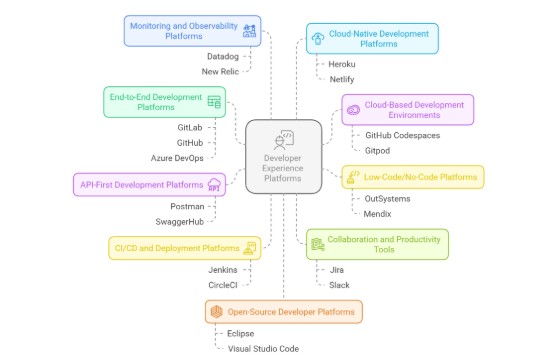Software developer experience today is significantly better than what we had several years ago. This is made possible by development experience platforms, which enhance workflow and productivity within development teams.
What is a Developer Experience Platform?

A developer experience platform is a set of tools, services, and environments for developers that enables them to be more productive, efficient, and satisfied in all stages of the development process.
These platforms aim to streamline workflows, reduce bottlenecks and inefficiencies, and provide developers with an efficient environment to build, test, deploy, and maintain software.
However, using a developer experience platform can pose several challenges to development teams.
Challenges of using a Developer Experience Platform

1. Technical Challenges
- The integration of already established tools, legacy systems, or third-party services is often inefficient and intricate.
- Performance bottlenecks can severely impact productivity. Many platforms fail to meet developers’ expectations.
- Regular updates and security patches are important for securing and stabilizing the platform. However, maintenance can sometimes cause downtime and disruptions.
- Adapting the platform to meet specific team or project needs may require significant effort and technical expertise.
2. Organizational & Cultural Challenges
- Developers may resist adopting a new platform since they are accustomed to existing tools or hesitant to change.
- Learning and adopting new processes, tools, workflows, and changes in behavior requires time. Initially, the shifts may result in lowered productivity because organizations have to focus on training and sharing knowledge.
- It can be difficult to establish and sustain effective communication within the tool for remote or distributed teams.
3. Financial Challenges
- The cost of implementing a developer experience platform is quite high due to the expenses involved in licensing, training employees, and setting up the infrastructure.
- Ongoing expenses like maintenance, scaling, and subscription costs tend to grow over the years.
4. Security & Compliance Challenges
- The platform must guarantee a significant level of protection against breaches, unwarranted access, and other vulnerabilities for sensitive information.
- You have to make sure that the tool meets the compliance needs specific to your organization and other industry standards and regulations.
5. Vendor & Ecosystem Challenges
- Proprietary APIs, SDK, or closed ecosystems make it difficult to shift away from the vendor or platform, resulting in heavy dependency on a single platform.
- Comprehensive documentation and the quality of vendor support have a great bearing on the effectiveness and usability of the platform.
6. Operational Challenges
- The platform should provide adequate performance, utilization, and error visibility for troubleshooting and debugging.
- Extracting actionable insights from the data generated by the platform can be challenging.
- Integrating and managing different tools within the platform can be complex and time-consuming.
Wrapping Up
Developer experience platforms are designed to help developers improve their daily workflows and deliver the best results for users. However, adopting such a new system comes with its own set of challenges for both developers and organizations. Understanding these challenges allows you to proactively mitigate them and ensure that you have the right developer experience software for your business.


